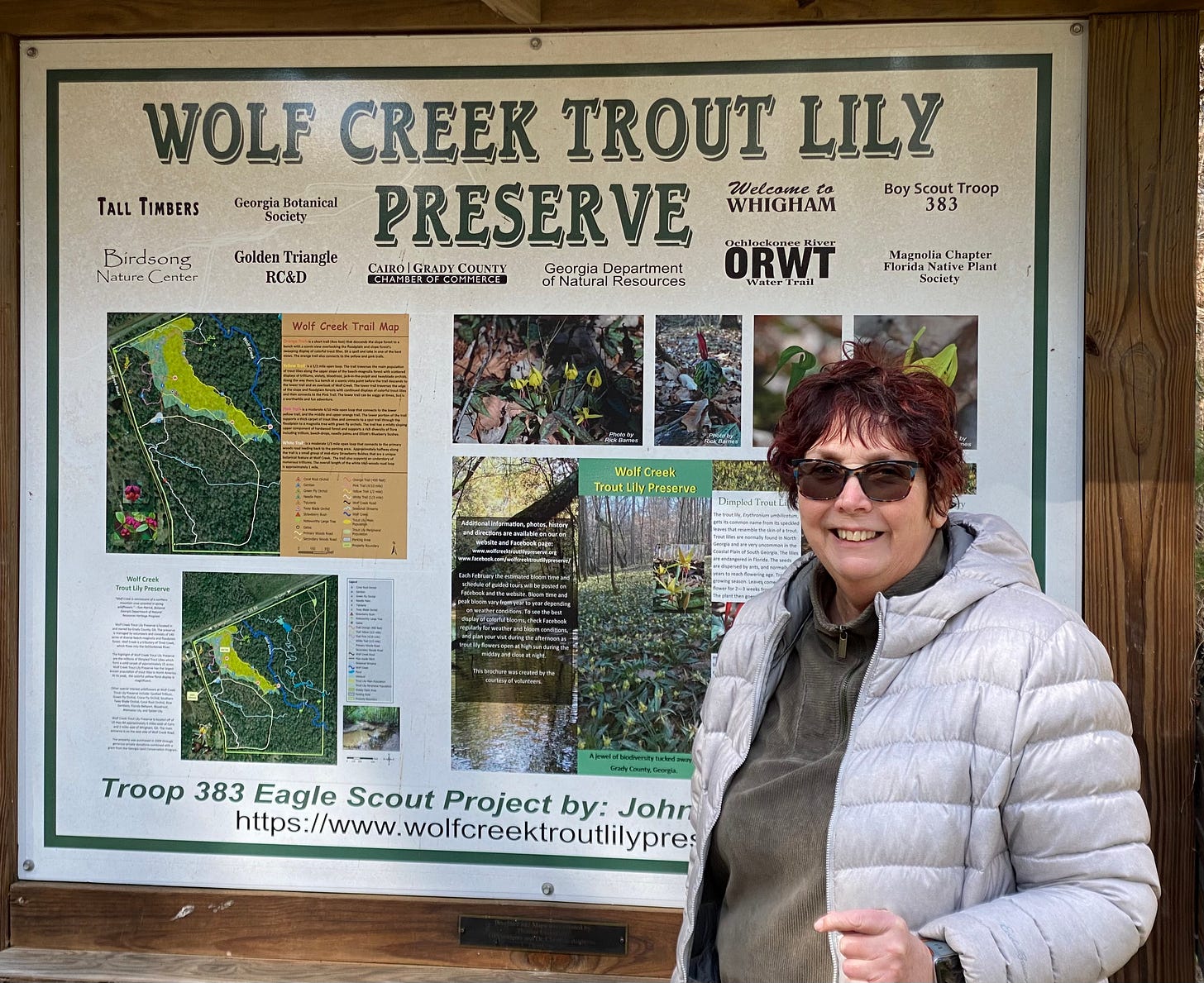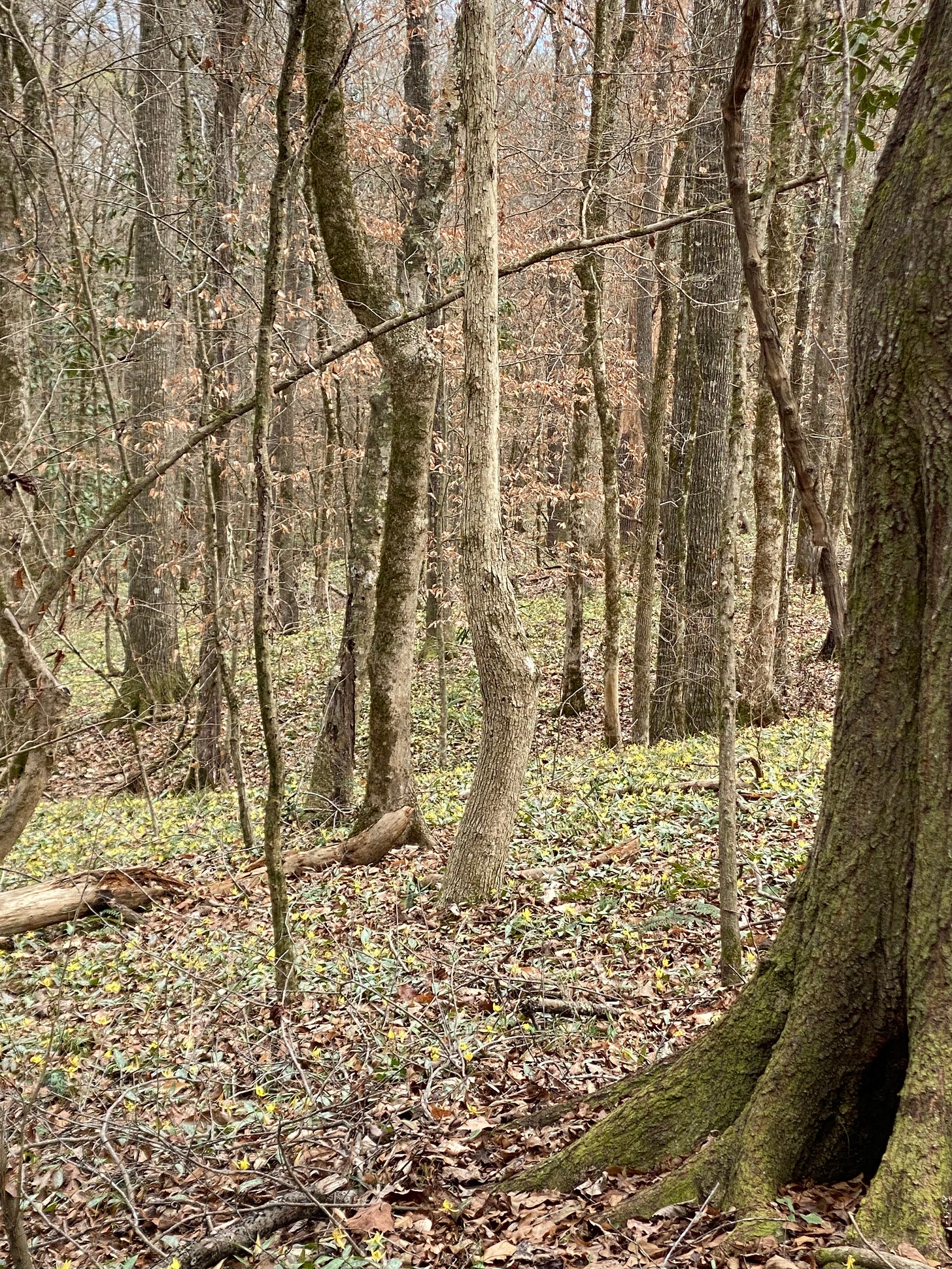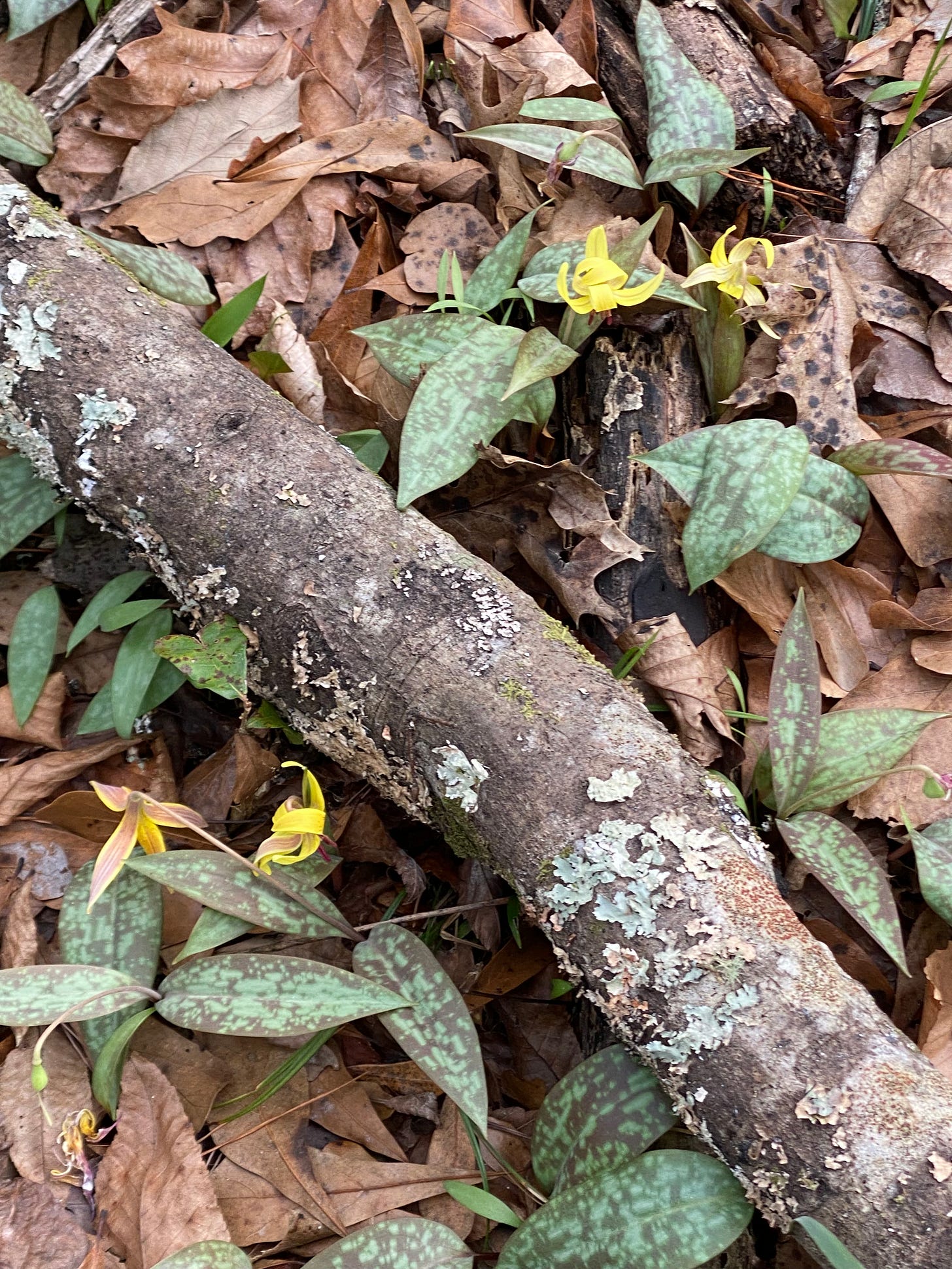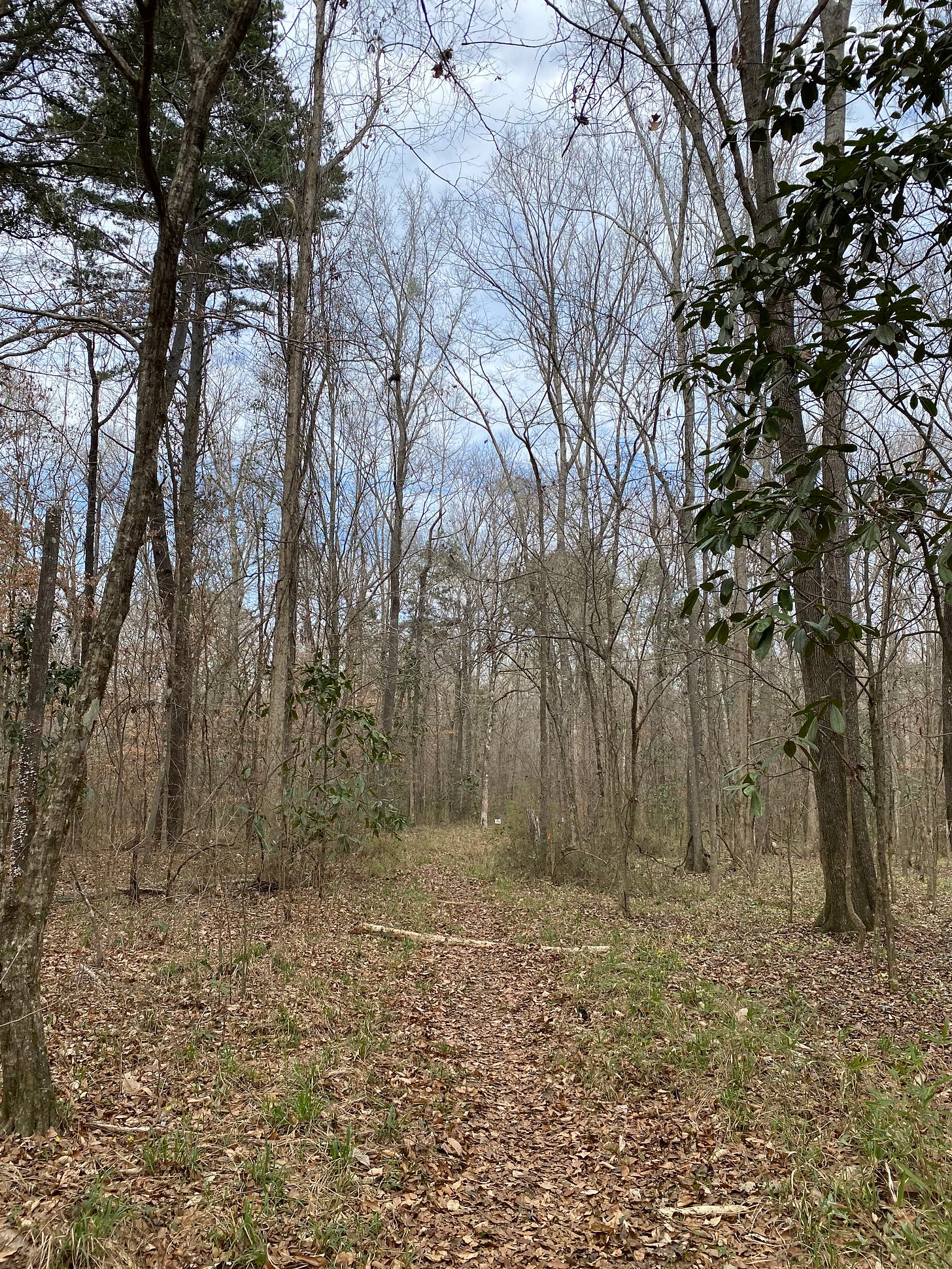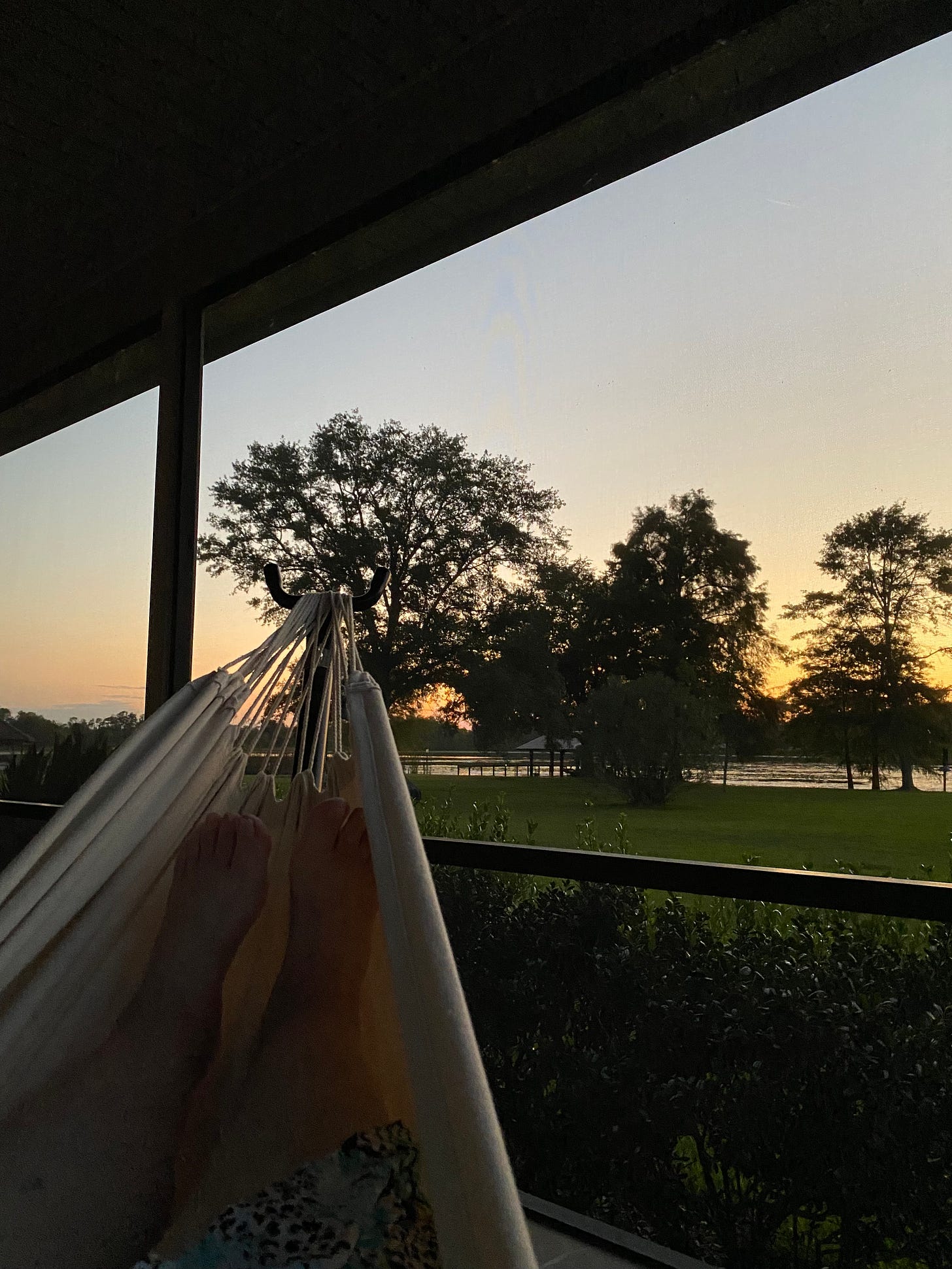In my daily quest to live a creative life, I hiked a remarkable natural treasure, Wolf Creek Trout Lily Preserve, that thrives somewhat close to my backyard. Nestled between Whigham and Cairo, Georgia, this 48-acre preserve is home to diverse wildlife, various native plants, and a unique environment known for its stunning display of Trout Lilies and the Spotted Trillium. Not familiar with either of these wildflowers, the preserve is an enlightening experience.
A Place of Peace and Beauty
The preserve is named after the delicate and elusive Trout Lily (Erythronium americium), which carpets the forest floor each February in a beautiful golden hue. These wildflowers thrive in the rich, moist soil along Wolf Creek, creating a picturesque scene. The other February jewel is the Spotted Trillium (Trillium maculatum), which grows in the same shaded habitat. Known for its striking purple petals with dark spots on the leaves, this rare trillium adds even more magic to the preserve’s landscape. Its bloom coincides with the Trout Lily’s peak season, adding more color along the trails.
A Blossoming Diversity
The blooming beauty and significance of the Wolf Creek Trout Lily Preserve are on display right now. While the Trout Lily may be the preserve’s star, the Spotted Trillum stole the spotlight for me. Here’s what makes both flowers so unique:
Spotted Trillium: This flower is stunning, with deep purple petals and dark spots. Its rarity complements its beauty, making it a must-see during its short bloom. The Spotted Trillium adds so much variety to the floral landscape of this preserve.
Trout Lily: These vibrant yellow flowers briefly blanket the forest floor, signaling the arrival of spring, drawing pollinators and visitors.
Biodiversity on Display
The preserve is not just home to these two beautiful plants. Towering trees, such as oaks and maples, provide shade and shelter to many birds, insects, and animals. You can spot lizards, frogs, and other aquatic life along the creek. It’s the perfect place for wildlife watchers, photographers, and nature enthusiasts.
Both the Trout Lily and Spotted Trillium play crucial roles in supporting local wildlife. These plants not only add beauty to the landscape but also attract pollinators like bees and butterflies, contributing to the ecosystem's overall health. The preserve is dedicated to providing this critical habitat and ensuring that all future generations can experience their delicate beauty.
Visit and Explore
Whether you are an avid hiker or enjoy a quiet stroll, Wolf Creek Trout Lily Preserve offers a variety of well-marked trails winding through the forest. There is minimal access for people using wheelchairs or with limited mobility. Many fallen logs and a blanket of damp leaves could impede some on the hilly slopes.
It’s easy to get immersed in the beauty of nature here, so bring your camera and a walking stick. They do have sparkleberry (huckleberry) walking sticks to borrow and are available for purchase. The best viewing of the wildflowers is usually in February and early March, depending upon the winter weather. The Trout Lilies open late morning or early afternoon, following the sun, and close at dusk. The flowers may stay closed if it’s raining or dark and cloudy in the morning. Each flower reopens for several days. The overall bloom can be three to four weeks long.
For more information on the Preserve, visit www.wolfcreektroutlilypreserve.org or follow their Facebook page for daily updates for what is blooming.
Birding with Merlin
It wasn't until I downloaded the Cornell Lab's Merlin Bird ID app that I realized how magical birdwatching can be. The app makes it easy to identify the birds that visit your neighborhood at various times of the year. Taking photos or recording birdsong to identify birds is my favorite aspect of this app. While lounging in my hammock on the screened porch, I use the app to record birdsongs; the app then uses that recorded data to identify and categorize the species. I am learning to appreciate the variety of nature with this app, especially because I live in a bird sanctuary.
Nature offers us the inspiration and the mediative peace we often seek. I hope you can get out there and enjoy it!




